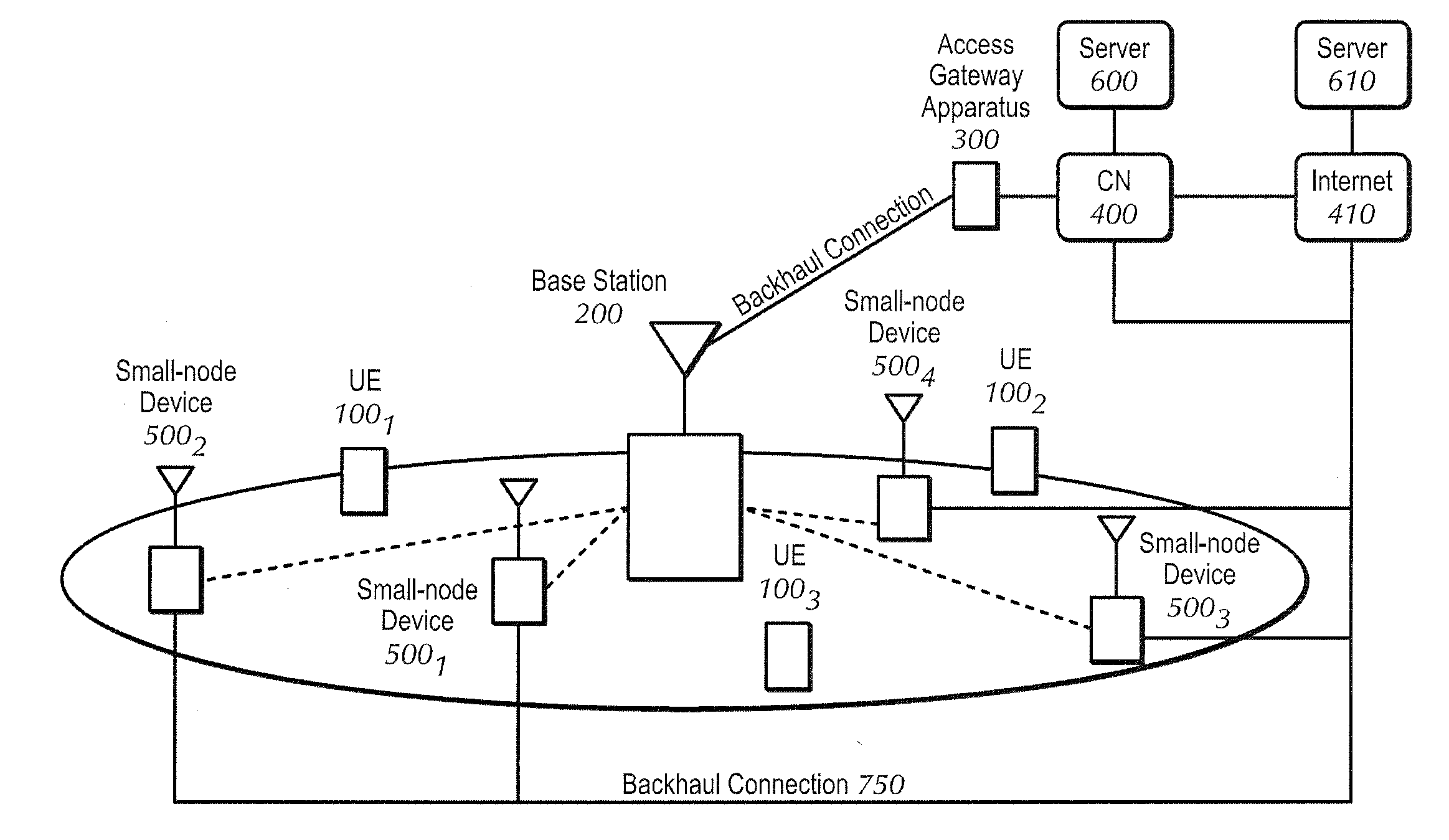Method and apparatus at the physical and link layer for mobile communications
a technology of physical and link layer, applied in the direction of network traffic/resource management, connection management, network topologies, etc., can solve the problems of increasing deployment density, affecting the quality of connectivity/mobility performance, and affecting the ability of conventional carrier aggregation operations between the macro base station and the conventional pico/femto base station
- Summary
- Abstract
- Description
- Claims
- Application Information
AI Technical Summary
Benefits of technology
Problems solved by technology
Method used
Image
Examples
case # 1
[0559]In Case #1, the small-node device 500A receives UL signals transmitted by the user equipment 100 in the D2UE connection 710A. In Case #2, the small-node device 500B receives UL signals transmitted by the user equipment 100 in the D2UE connection 710B. In Case #3, the small-node device 500A and the small-node device 500B receive UL signals transmitted the user equipment 100 simultaneously.
[0560]More specifically, the D2UE L1 communication section 504A-1 receives the UL signals in the small-node device 500A, and the D2UE L1 communication section 504B-1 receives the UL signals in the small-node device 500B. And, the D2UE communication section 104 transmits the UL signals in the user equipment 100.
[0561]Here, the UL signals are dedicated to the user equipment 100. That is, the UL signals are signals specific to the user equipment 100. For example, according to one or more embodiments of the present disclosure, the UL signals are scrambled by a random sequence which is specific to ...
PUM
 Login to View More
Login to View More Abstract
Description
Claims
Application Information
 Login to View More
Login to View More - R&D
- Intellectual Property
- Life Sciences
- Materials
- Tech Scout
- Unparalleled Data Quality
- Higher Quality Content
- 60% Fewer Hallucinations
Browse by: Latest US Patents, China's latest patents, Technical Efficacy Thesaurus, Application Domain, Technology Topic, Popular Technical Reports.
© 2025 PatSnap. All rights reserved.Legal|Privacy policy|Modern Slavery Act Transparency Statement|Sitemap|About US| Contact US: help@patsnap.com



